Getting a rat nest out of hair can be an alarming and distressing experience. Whether it’s due to a pet mishap or an unfortunate encounter with wildlife, knowing how to safely and effectively remove the tangled mess is crucial.
This guide on how to get rat nest out of hair will provide step-by-step instructions to help you navigate this unusual challenge, ensuring that you maintain both the health of your hair and your peace of mind. With the right tools and techniques, you can resolve this situation with minimal damage and discomfort.
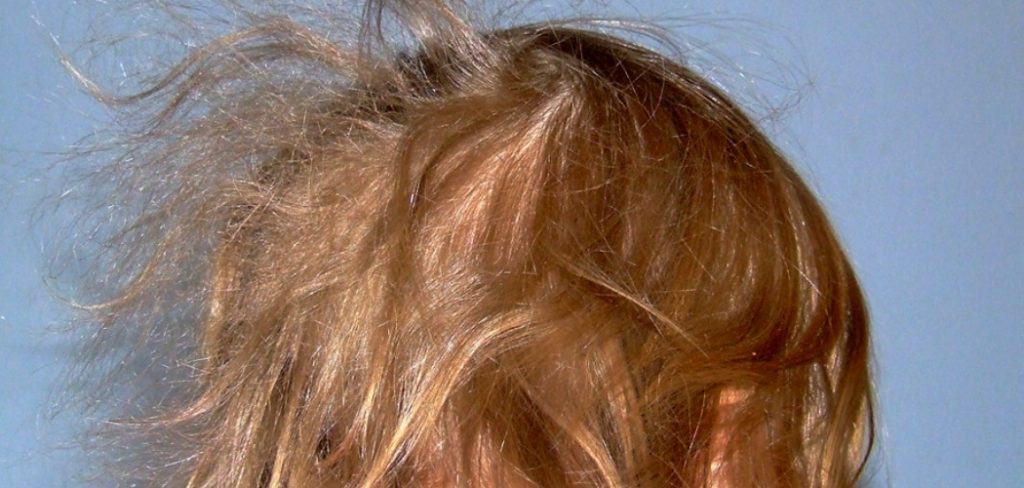
Why is It Important to Remove a Rat Nest From Hair?
Removing a rat nest from hair is essential for several reasons. Firstly, a rat nest can trap not only hair but also dirt, debris, and potentially harmful parasites that may lead to infections or irritations on the scalp. Secondly, the longer a rat nest remains in the hair, the more difficult it becomes to remove, which can result in increased damage and breakage to the hair strands.
Additionally, maintaining proper hygiene is vital for overall scalp health, and removing foreign objects contributes to a cleaner and healthier environment. Lastly, addressing the issue promptly can alleviate emotional distress and embarrassment, allowing individuals to regain their confidence and comfort.
Needed Materials
Fine-toothed Comb:
This is the most critical tool when removing a rat nest from hair. A fine-toothed comb will help detangle and separate the hair strands, making it easier to remove the nest without pulling or causing further damage.
Scissors:
If the rat nest is extremely tangled and cannot be removed with a comb, scissors can be used as a last resort. However, it’s essential to use caution and only cut small sections of the rat nest at a time to avoid cutting or damaging the hair.
Hair Detangler:
Using a detangling spray or cream can help loosen up and soften the rat nest, making it easier to remove without causing too much discomfort. It’s best to use a product specifically designed for hair, as they are typically gentler and less harsh on the scalp.
Shampoo and Conditioner:
After removing the rat nest, it’s crucial to thoroughly wash and condition the hair to remove any remaining debris or parasites that may have been trapped in the nest. This will also help rehydrate and nourish the hair strands, promoting healthy regrowth. It’s recommended to use a moisturizing shampoo and conditioner to prevent any further damage or dryness.
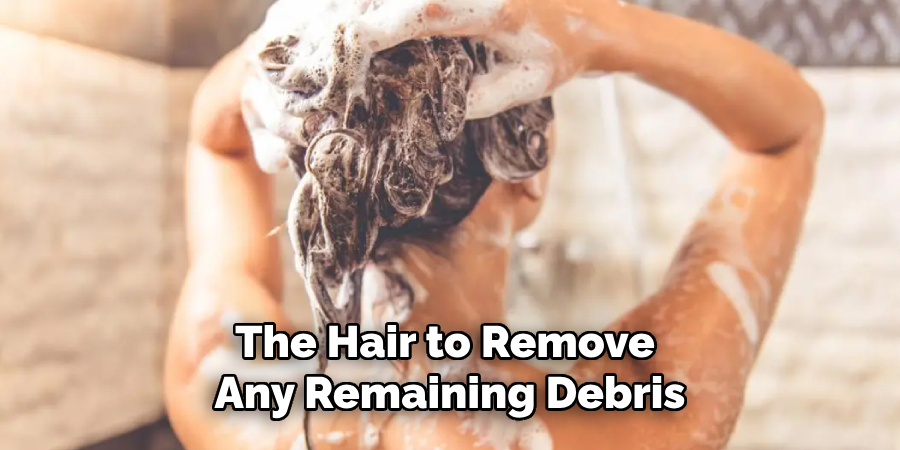
8 Step-by-step Guide on How to Get Rat Nest Out of Hair
Step 1: Stay Calm
The first and most crucial step in removing a rat nest from your hair is to remain calm. Panic can lead to hasty actions that may cause further tangling or damage. Take a deep breath and remind yourself that this situation is manageable.
Approach the problem systematically, and give yourself a moment to gather the necessary materials before proceeding. Staying composed will help you think clearly about the best methods to use and ensure a more positive outcome. Remember, you can handle this!
Step 3: Begin Separating the Hair
Once you have calmed yourself and gathered your materials, it’s time to start separating the hair. Begin by gently sectioning off small portions of hair surrounding the rat nest. Use your fingers to carefully pull apart any tangled strands before introducing the fine-toothed comb. Work slowly and patiently, starting from the ends of your hair and moving upwards toward the roots.
This technique helps reduce breakage and minimizes discomfort. If you encounter particularly stubborn tangles, apply a small amount of hair detangler to assist in loosening the knots. Remember to be gentle throughout the process to ensure that you don’t inadvertently cause additional damage or pain.
Step 4: Work in Sections
As you continue to separate and comb through the hair, try to work in smaller sections at a time. This approach allows for more control over the process and makes it easier to detect and address any remaining tangles. It may take longer, but it will help prevent further entanglement, making the overall process more manageable.
You may need to reapply the detangler or add a little bit of water to particularly stubborn areas. If a specific section seems too challenging, you can move on and return to it later with a fresh perspective.
Step 5: Use Scissors as a Last Resort
If the rat nest is severely tangled and cannot be removed using the comb, use scissors as a last resort. Start by cutting small sections at a time, making sure to work slowly and carefully. Always hold the hair strand taut between your fingers while cutting so you don’t accidentally cut your scalp or other hair strands. Continue until you have removed all visible knots from the rat nest.
It’s crucial to note that this step should only be used as a last resort. Cutting too much of the hair can result in uneven layers and unwanted choppy cuts.
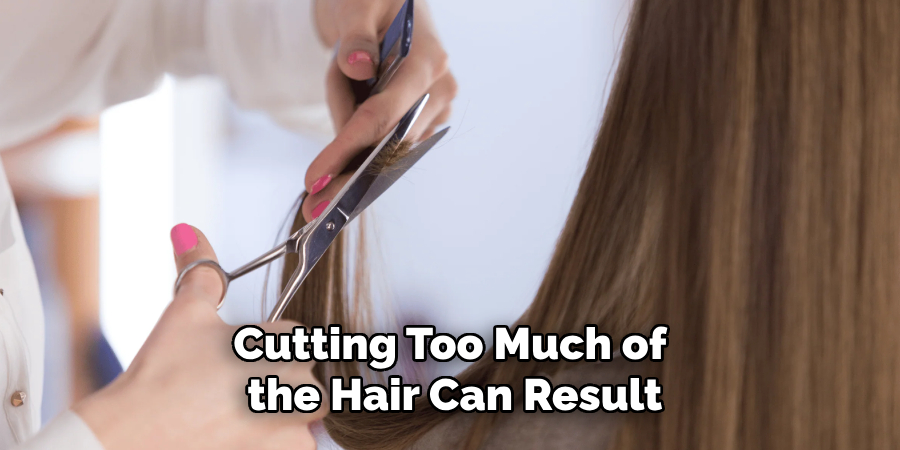
Step 6: Comb Through the Entire Hair
Once you have removed all visible knots, comb through your entire hair with a fine-toothed comb. This process will help ensure that no small tangles or remaining bits of the rat nest are left behind. Continue working in sections until you have combed through the entire head of hair smoothly.
You may need to use detangler once again for any stubborn areas or apply a leave-in conditioner to help nourish and protect the hair after the removal process.
Step 7: Wash Hair
After successfully removing the rat nest, it’s essential to wash your hair thoroughly. Use a gentle shampoo and warm water to remove any remaining particles or residue from the rat nest. Be sure to massage your scalp gently while washing, as this will help stimulate blood flow and promote healthy hair growth.
As an added precaution, you can also use a clarifying shampoo or apple cider vinegar rinse to cleanse and clarify your scalp further.
Step 8: Seek Professional Help (Optional)
If you are unable to remove the rat nest on your own or are uncomfortable attempting it, don’t hesitate to seek professional help. A hairstylist or hairdresser can use specialized tools and techniques to eliminate the rat nest safely without causing damage to your hair. They can also offer tips and recommendations for maintaining healthy hair and preventing tangles in the future.
Following these steps on how to get rat nest out of hair and using the proper materials can help you successfully remove a rat nest from your hair without causing harm or unnecessary discomfort. Remember to stay calm, work slowly and patiently, and seek professional help if needed for a smoother and more manageable experience. With proper care and attention, you can prevent future tangles and keep your hair healthy and beautiful.
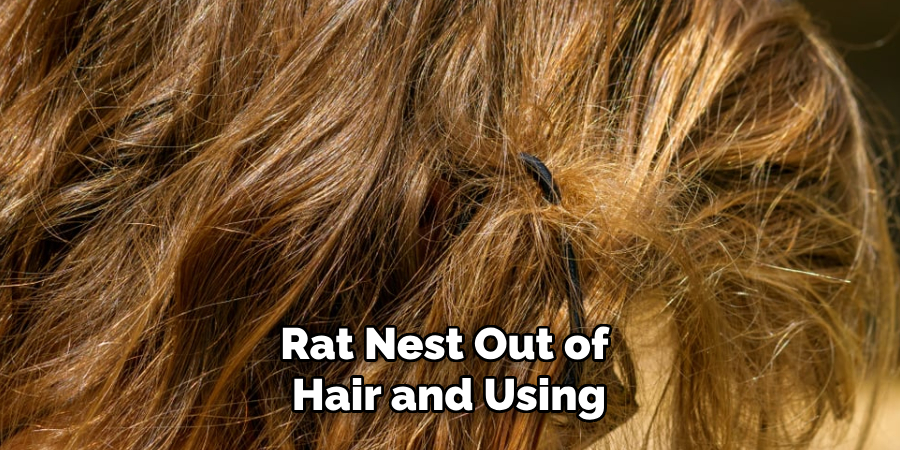
Additional Tips
Regular Maintenance:
To prevent the formation of rat nests in the future, incorporate regular hair care practices, such as brushing your hair daily and using a leave-in conditioner to keep strands moisturized and manageable.
Choose the Right Hair Accessories:
Opt for hair accessories that are gentle on your hair, such as fabric-covered elastics or hair ties designed for minimal snagging, to reduce the chance of tangling.
Avoid Sleeping with Wet Hair:
If possible, avoid going to bed with wet hair, as this can increase the likelihood of tangling. If you need to wash your hair at night, consider loosely braiding it or using a silk or satin pillowcase to reduce friction.
Stay Hydrated:
Keeping your body hydrated can improve the overall condition of your hair, making it less prone to tangling and breaks.
Consider Hair Treatments:
Regular treatments, such as deep conditioning or hair masks, can enhance hair’s texture and strength, helping to prevent future knots and tangles.
Educate Family Members:
If you’re helping a child or family member, educating them about gentle hair care can empower them to take an active role in avoiding tangles and maintaining healthy hair.
By following these additional tips and incorporating them into your hair care routine, you can prevent rat nests from forming in the future and keep your hair looking healthy and tangle-free. Remember to be patient with yourself and your hair, and don’t hesitate to seek professional help if needed.
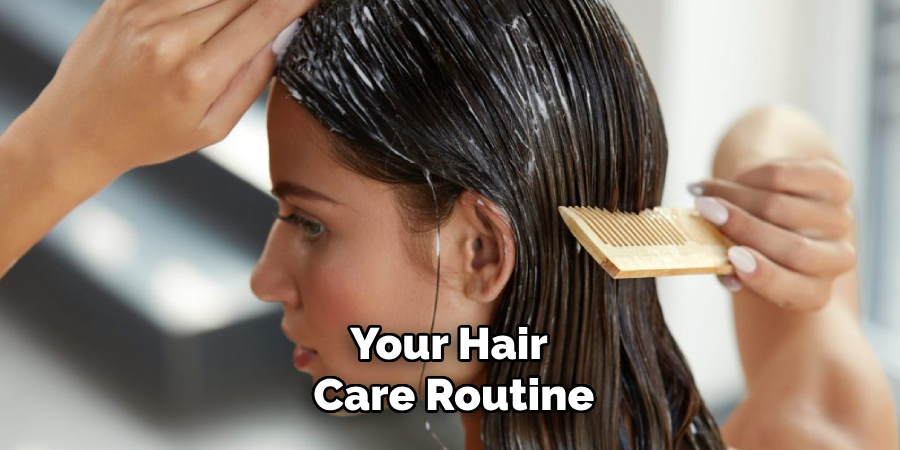
Frequently Asked Questions
Q: Can I Use Regular Shampoo to Remove a Rat Nest From My Hair?
A: No, it is not recommended to use regular shampoo as it may not effectively remove the tangles and can cause further damage to the hair. It is better to use a gentle shampoo or detangling spray specifically designed for tangled hair.
Q: How Long Does it Take to Remove a Rat Nest From Hair?
A: The time it takes to remove a rat nest from hair can vary depending on the severity of the tangles and the length of your hair. It can take anywhere from 30 minutes to an hour or more. It’s essential to be patient and work in small sections to avoid causing damage or discomfort.
Q: Can I Prevent Tangles and Rat Nests in the Future?
A: Yes, there are ways to prevent tangles and rat nests in the future. These include using a wide-toothed comb instead of a brush, avoiding harsh chemicals and heat styling tools, regularly trimming split ends, and using hair care products specifically designed for tangled or damaged hair.
Q: Is it Better to Cut the Hair or Remove the Rat Nest?
A: It is better to try and remove the rat nest rather than cutting the hair, as this can cause uneven layers and unwanted choppy cuts. If all other methods fail, then carefully cutting small sections may be necessary, but it should only be used as a last resort. Overall, patience and gentle techniques are key in effectively removing a rat’s nest from hair without causing damage. So, try to avoid cutting your hair unless absolutely necessary.
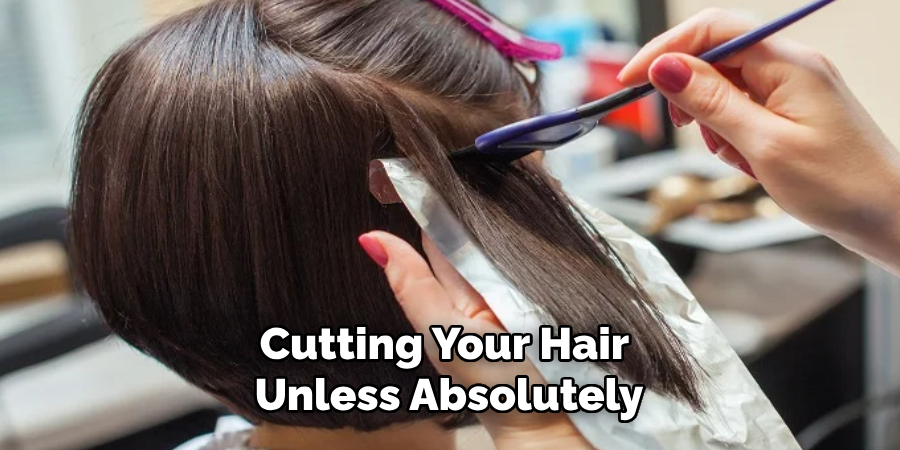
Conclusion
Removing a rat nest from your hair may seem daunting at first, but it is possible with patience and proper technique. The key is to stay calm, work slowly and gently, and have the necessary materials on hand. Remember that seeking professional help is always an option if needed.
By following this step-by-step guide on how to get rat nest out of hair, you can successfully remove a rat nest from your hair without causing damage or discomfort. With a little bit of care and attention, you can keep your hair healthy and tangle-free in the future. So, don’t panic the next time you encounter a rat nest – just follow these steps and tackle it with confidence!
About the Author
Jane Hubbard is a passionate beauty expert with a wealth of experience in makeup, hair, and overall beauty techniques. After years of working as a hairdresser specialist, she followed her entrepreneurial spirit and started her own consultancy business.
Jane has always been driven by her desire to help others feel confident in their own skin, and she does this by sharing her knowledge, experiences, and practical beauty tips. Through her consultancy, she empowers individuals to embrace their unique beauty, offering tailored guidance that boosts both self-esteem and personal style.
Professional Focus
- Specializes in makeup, hairstyling, and beauty consulting.
- Provides personalized beauty advice, tips, and techniques to help individuals feel confident in their appearance.
- Dedicated to staying up-to-date with the latest industry trends and developments.
- Passionate about creating a comfortable and empowering experience for every client.
Education History
- University of Craft and Design – Bachelor of Fine Arts (BFA) in Woodworking and Furniture Design
- Woodworking Apprenticeships – Extensive hands-on training with skilled craftsmen to refine carpentry and furniture making techniques
- Online Courses & Masterclasses – Continued education in advanced woodworking techniques, design principles, and specialized tools
Expertise:
- Makeup artistry, hairstyling, and beauty consulting.
- Personalized beauty techniques to enhance confidence and self-expression.
- Educating clients on how to maintain their beauty routines at home.
